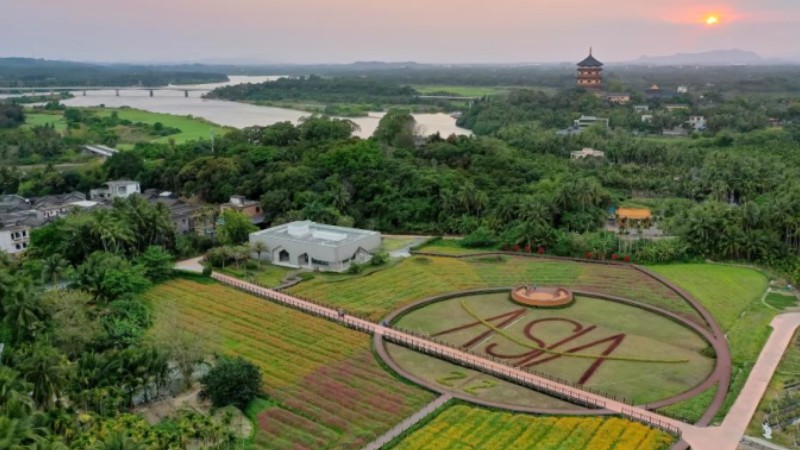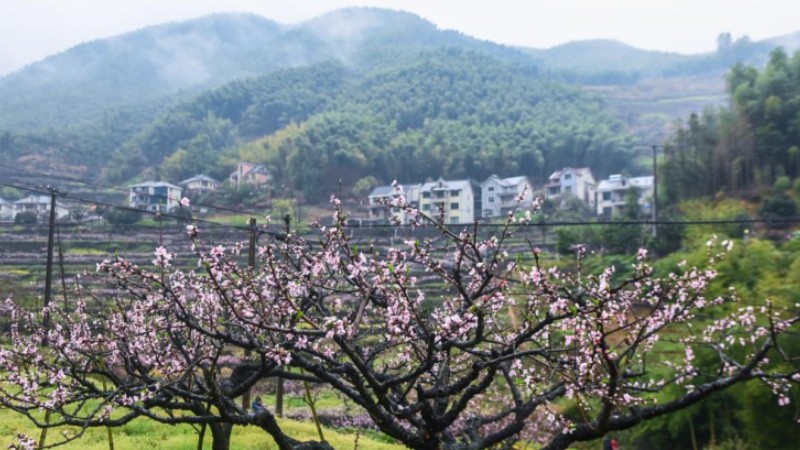Ancient Karez wells still nourishing Xinjiang people
URUMQI, March 27 (Xinhua) -- A constant theme through Uygur Eskander Kadir's long life is the local system of ancient Karez wells, which he has helped to maintain and protect, enjoying the fresh water since childhood.
"We are the children of Karez wells," said the 73-year-old resident of Baxbala Karzi Village in the city of Turpan, northwest China's Xinjiang Uygur Autonomous Region.
In Turpan, the average annual precipitation is only 16 mm, while the evaporation rate measures 3,000 mm. Eskander Kadir's ancestors, and people of other ethnic groups in Xinjiang, developed the Karez wells thousands of years ago, providing the region's inhabitants with water for drinking and irrigation.
A Karez well consists of a vertical shaft connected to underground channels that surface in the form of ditches and small ponds.
The channels are supplied with water from the melted ice and snow in Xinjiang's Tianshan Mountains, while the underground structure of the wells stops water evaporating.
Conveying water from deep underground to the surface and traversing more than 5,000 km within Xinjiang, Karez wells are considered one of China's greatest surviving antique man-made structures, along with the Great Wall and the Grand Canal.
For centuries, the wisdom behind the design of the wells ensured the people of Xinjiang remained well nourished. However, several decades ago, due to the pressures of modern irrigation and pumping practices, some of the wells dried out. Since then, they have been revived through various official measures, with the help of local residents, bringing benefits in terms of production, daily life and ecology.
ANCIENT WISDOM NURTURES LIFE
"In my youth, I had to repair at least five Karez wells every year. It was the happiest and best time in my life," said Eskander Kadir, adding that he had a sense of achievement when leading his peers in clearing waterways that were blocked with mud.
The younger generation took responsibility for dredging the underground channels of the 200-year-old Karez in his village, making sure the water flow was sufficient for irrigation during the spring plowing.
These days, Eskander Kadir still plays a role by sharing his experience and giving advice. Together with his friends, he frequently inspects the Karez by his home, ensuring no garbage is polluting the water in the small pond.
"The taste of water in a Karez is better than tap water," he said. "We drink it and provide it to guests when they visit."
Adili Aihimaiti, 33, lives in Yaer Village in Turpan, and makes use of the 11-km Miyimu Bay Karez, which has a history of over 300 years. The farmer's cottage is just beside an outlet separating the underground channel from the open-air channel.
"Apart from drinking the water, we use the Karez for our flocks and herds, for cleaning the yard and rinsing grapes," said Adili Aihimaiti.
Turpan is one of the main grape production bases in China. Its total planting area is expected to reach 36,000 hectares this year, according to the city's forestry and grassland bureau.
His family also assumes the duty of monitoring the water level and providing information to the dredging team in his village.
"In recent years, the water flow has been increasing, as our Karez is maintained and repaired every spring," he said.
KAREZ PROTECTION BEARS FRUIT
Gahip Wupur, 62, and his four teammates assembled to clear mud from a recent mudslide in the underground channel of a Karez well in Turpan's Huayuan Township. They started by lifting away a wooden board covering the mouth of a vertical shaft, and then shoveling away some sand.
He and a team mate descended slowly into the underground channel via the 30-meter-deep vertical shaft, attached to a rope connected to an electric tractor. Others at ground level handed them tools, and used the rope to carry up loads of mud as it was excavated.
In the cramped underground environment, with water levels up to one meter deep, the workers had to kneel, lie down, lean back, or contort their bodies into various poses to clear the channel. When fatigued, they would dip their feet in the cold water and lean on the rough surface of the channel. Their feet were clogged with mud, which was smeared all over their protective clothing.
"It takes courage and wisdom to go down the well, both of which are indispensable," said Gahip Wupur, who has been engaged in the task for over 30 years.
In the 1980s, the growth in demand for agricultural irrigation and the increasing usage of pumping wells had lowered the water table and dried out the Karez wells.
In 2006, the Xinjiang Karez protection regulations were passed to protect the wells. Since 2009, the central and regional governments have invested over 100 million yuan (about 14.4 million U.S. dollars) in rescuing and protecting more than 200 Karez wells in Xinjiang, as well as funding dredging workers like Gahip Wupur, according to Li Gang, from the Turpania Academia, a research institution focused on the local area.
He said Karez provides residents of all ethnic groups in the city with water used for production, life and ecology, adding that national unity has been promoted through the maintenance, protection and utilization of Karez.
Around 2017, thanks to years of protection efforts, the water flow from Karez in Xinjiang started to increase, according to the Xinjiang Karez Research Association. Most of Xinjiang's Karez wells are in Turpan, and by 2022, 165 wells had been rescued and reinforced in the city, whose water flow has risen overall.
"Karez is our life. Without Karez, there would be no Turpan, nor would there be an oasis civilization in Turpan," says a proverb in the region.
IMPETUS FOR MODERN DEVELOPMENT
Karez is not a "specimen" of a historical water conservancy project, but a "living fossil" that still provides a function in irrigation and remains a precious form of cultural heritage for people in Xinjiang.
Abaidulla Omar, 28, returned to his hometown of Turpan to start his livestreaming sales business, Dilijiang, which means "deliver beautiful Xinjiang" in Chinese. He achieved a turnover of over 20 million yuan last year and acquired over 6 million online followers.
"Karez is the source of my inspiration. We protect our cultural relics and use the culture of thousands of years to empower our business," said Abaidulla Omar.
Parhat Rixit, who once worked with Abaidulla Omar, has finished the decoration of his homestay and tidied it up. It opened for business in March near an open channel of a Karez well.
"The environment around the Karez well will give tourists a sense of tranquility," said Parhat Rixit.
His homestay is about 1 km away from the Turpan Karez Paradise, where Karez wells and their surroundings were transformed into a museum. Inside its renovated underground channel, visitors can stand on the glass walkway and have a close look at the flowing current of a Karez.
In China, Karez wells can also be found in the provinces of Gansu, Shaanxi and Shanxi. They are also found in nearby countries, including Afghanistan, Iran and Pakistan.
Apart from preserving the Karez wells and utilizing the water and its cultural value, Xinjiang is making efforts to counter the constraints of its water resources.
Jia Yongheng is head of a cooperative focusing on agriculture and agricultural machinery in Yining County in Xinjiang's Ili Kazak Autonomous Prefecture. He said that, since a high-standard farmland and the high-efficiency water-saving project was put into use last June, the yield of the cooperative's over 200 hectares of corn has increased by about 50 percent during the harvest season.
According to the regional department of agriculture and rural affairs, Xinjiang had created 3.3 million hectares of such high-standard and water-saving farmland by the end of 2022, accounting for 47.4 percent of its arable land.
China has vowed to maintain harmony between humanity and nature in pursuing Chinese modernization.
According to Shan Jixiang, former curator of the Palace Museum, Karez wells in Turpan reflect the wisdom and spiritual strength accumulated by residents.
"For survival, production and development, people live in harmony with nature," he said.
Photos
Related Stories
- Herdsmen enjoy life changes under relocation policy in China's Xinjiang
- Migratory birds return to Bosten Lake in NW China’s Xinjiang
- Expanding Ayakum replaces Bosten as largest lake in Xinjiang
- Goat grabbing competition held to greet start of spring in Xinjiang
- Flocks of wild black-tailed gazelle forage in Karamay, NW China's Xinjiang
Copyright © 2023 People's Daily Online. All Rights Reserved.









